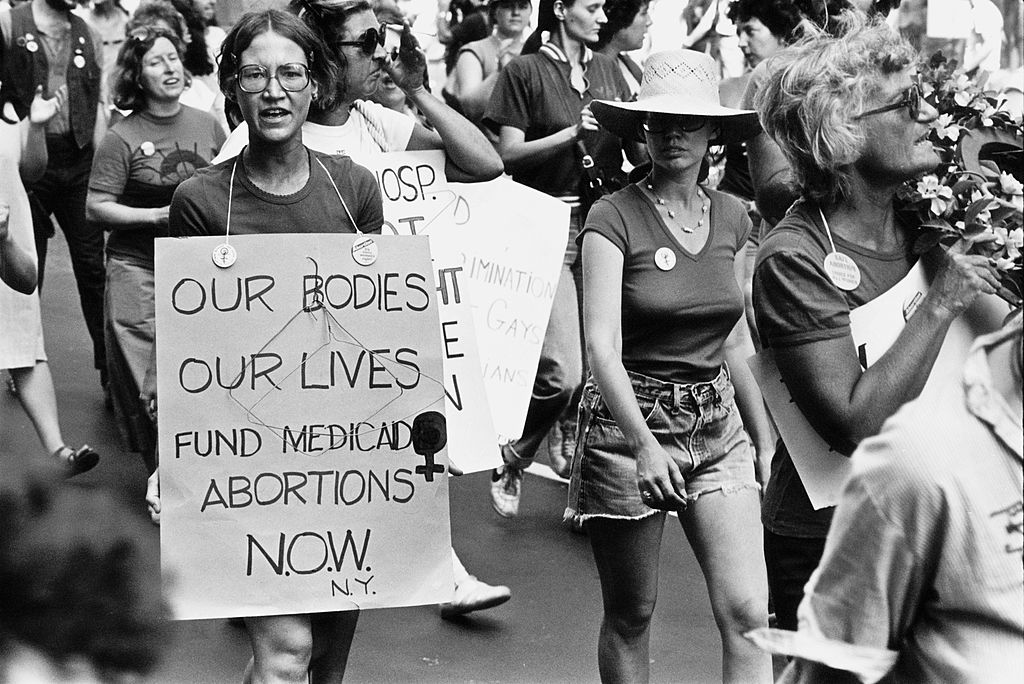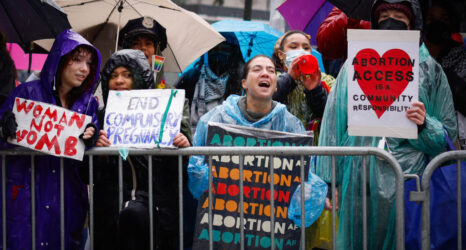Many people enrolled in public programs—such as Medicaid—must pay out-of-pocket for their abortion care.

Abortion is an essential healthcare service in the United States, with close to one million performed in 2020. While the Dobbs v. Jackson Women’s Health Organization decision eliminated the constitutional right to abortion and resulted in abortion bans in multiple states, people continue to seek abortion care. Even in states where abortion is still legally protected, many in need of financial support may not be able to obtain abortion care due to the Hyde Amendment.
This amendment, passed 47 years ago last month, prevents federal funds from being used to cover the cost of abortion services except in very limited circumstances. Many people enrolled in public programs—such as Medicaid—have to pay out-of-pocket for their abortion care.
In 2021, the median out-of-pocket abortion cost for a first-trimester medication abortion was $568 (or $625 for a procedural abortion). For many Americans, this cost for a one-time health expenditure is beyond their reach. A third of Americans reported that the largest expense they could pay with their savings was under $500, and high inflation means even less funds are available for a significant one-time expense.
When people are unable to use their insurance to cover their abortion, they go into debt to cover the procedure, forgo basic necessities, delay care while they search for the funds—or, in some cases, don’t have the procedure at all.
Cost matters most to historically oppressed populations. One study found that among people who identify as transgender and gender expansive, lack of Medicaid coverage of abortion was one of the reasons they did not get the service.
While some states have banned or severely restricted abortion access, others have expanded abortion access by using state funds to ensure that Medicaid covers the cost of abortion. As of August 2023, 17 states fund Medicaid coverage of all abortions, with Rhode Island being the most recent state to do so. When states have taken this step, the result has been increased and earlier access to abortion care.
Evidence suggests that Medicaid coverage of abortion could also increase access for people who are not eligible to enroll in a state’s Medicaid program (including people from out-of-state and some immigrants) because abortion funds could then focus on providing resources to others in need of financial assistance. This is an important fact in a post-Dobbs world, as we look for ways to improve access to abortion care.
Making abortion more financially accessible will ultimately lead to more people receiving the care they desire and need. Without access to abortion, people may be forced to carry an unwanted pregnancy to term, seek unsafe methods of pregnancy termination, and face long-lasting financial and familial well-being consequences.
Although abortion care is now extremely difficult for many people to access in some parts of the country, it is important to remember that states have the power to make abortion care accessible for both their own residents and people seeking care from other states. If states use their own funds to cover abortion care for Medicaid recipients, two things could happen:
- People earning low income could receive the care they need.
- Abortion funds could focus on providing financial assistance to people who do not qualify for Medicaid, including those traveling from out-of-state to legally access abortion care
Policymakers can also support the Equal Access to Abortion Coverage in Health Insurance (EACH) Act, which would require federal healthcare programs like Medicaid to provide coverage for abortion services and would prevent states from banning coverage of abortion services in plans offered through the Affordable Care Act (ACA) Marketplace.
States can also require Marketplace plans and private insurance plans to provide abortion coverage; this has been done in four and six states, respectively.
Abortion is an essential aspect of reproductive healthcare, and access should not be limited or determined by one’s (in)ability to pay.
From the Hyde Amendment to the Dobbs decision, Americans have seen detrimental restrictions wrongfully placed on reproductive healthcare access in their country. There is still work that can be done to improve access to abortion care at the state and federal levels; these actions can make a big difference.
Up next:
U.S. democracy is at a dangerous inflection point—from the demise of abortion rights, to a lack of pay equity and parental leave, to skyrocketing maternal mortality, and attacks on trans health. Left unchecked, these crises will lead to wider gaps in political participation and representation. For 50 years, Ms. has been forging feminist journalism—reporting, rebelling and truth-telling from the front-lines, championing the Equal Rights Amendment, and centering the stories of those most impacted. With all that’s at stake for equality, we are redoubling our commitment for the next 50 years. In turn, we need your help, Support Ms. today with a donation—any amount that is meaningful to you. For as little as $5 each month, you’ll receive the print magazine along with our e-newsletters, action alerts, and invitations to Ms. Studios events and podcasts. We are grateful for your loyalty and ferocity.





